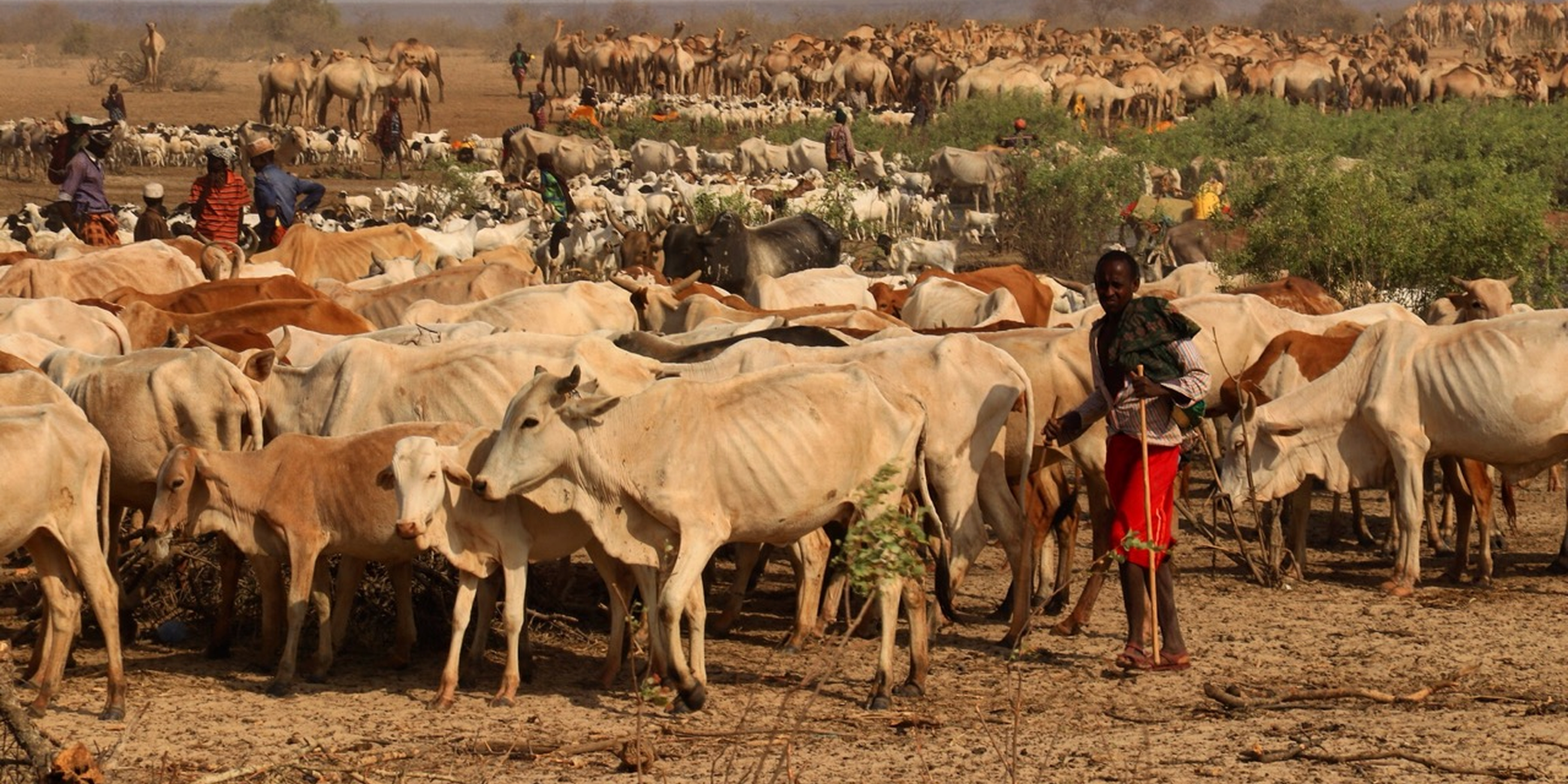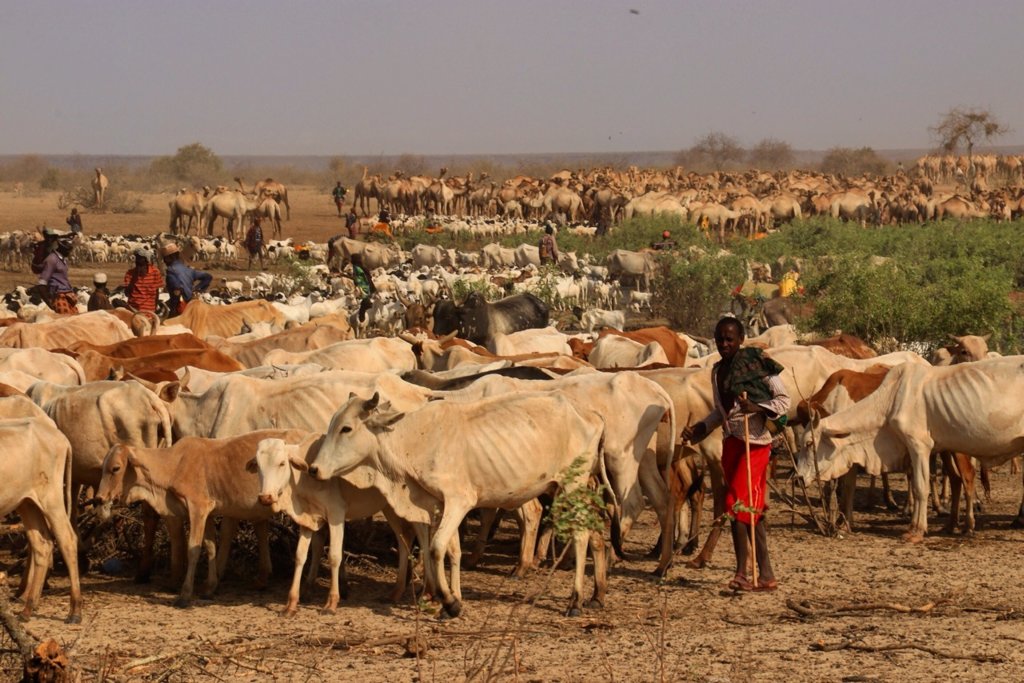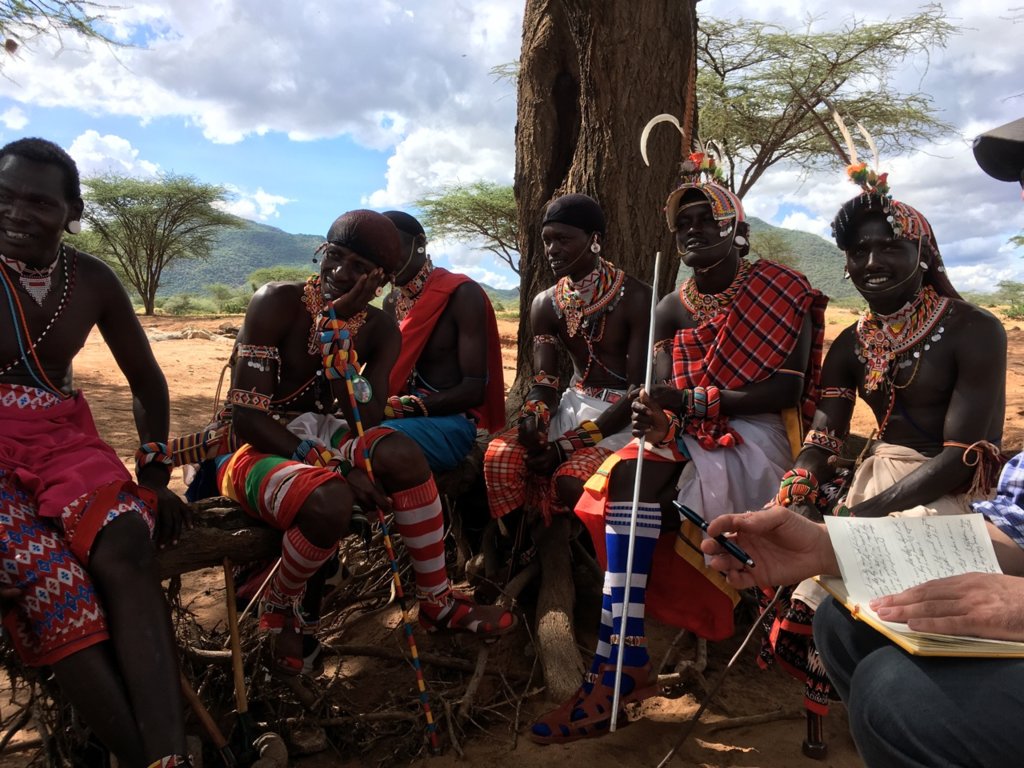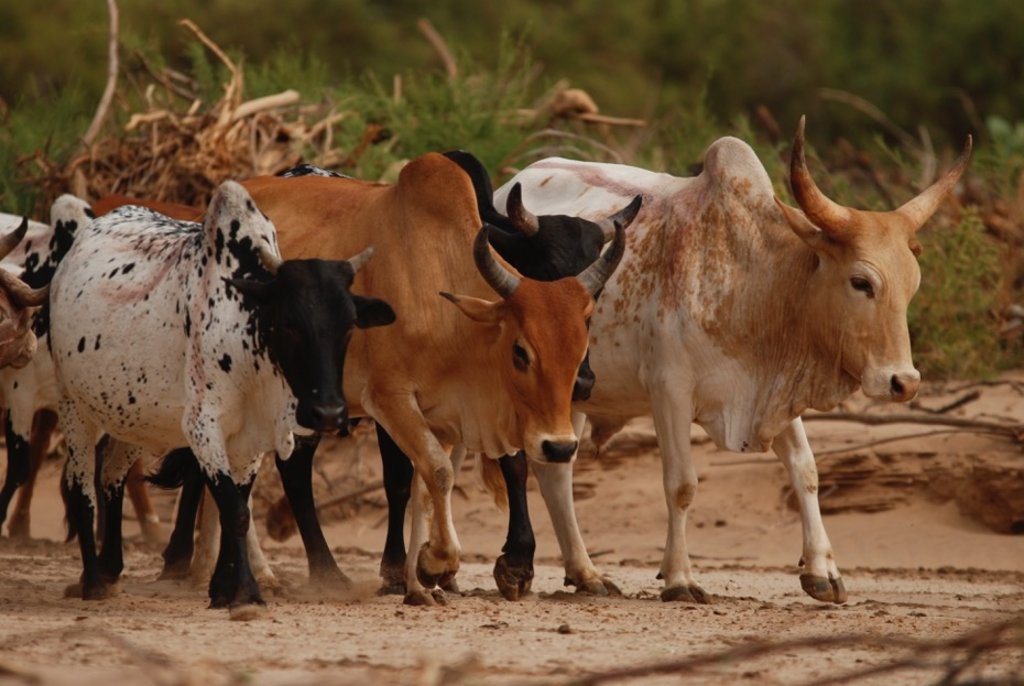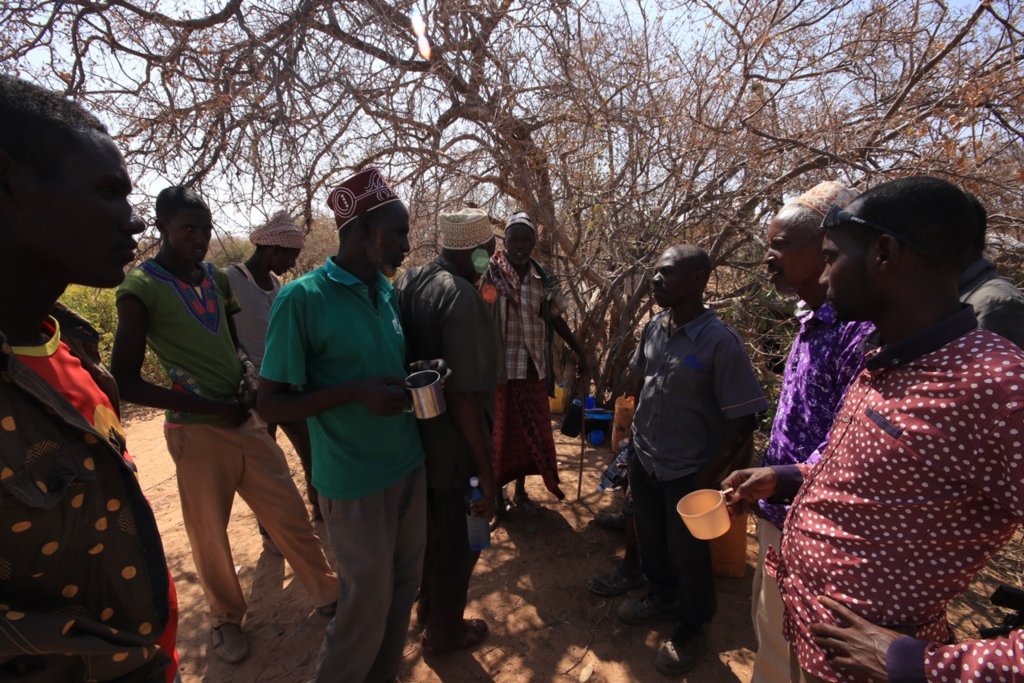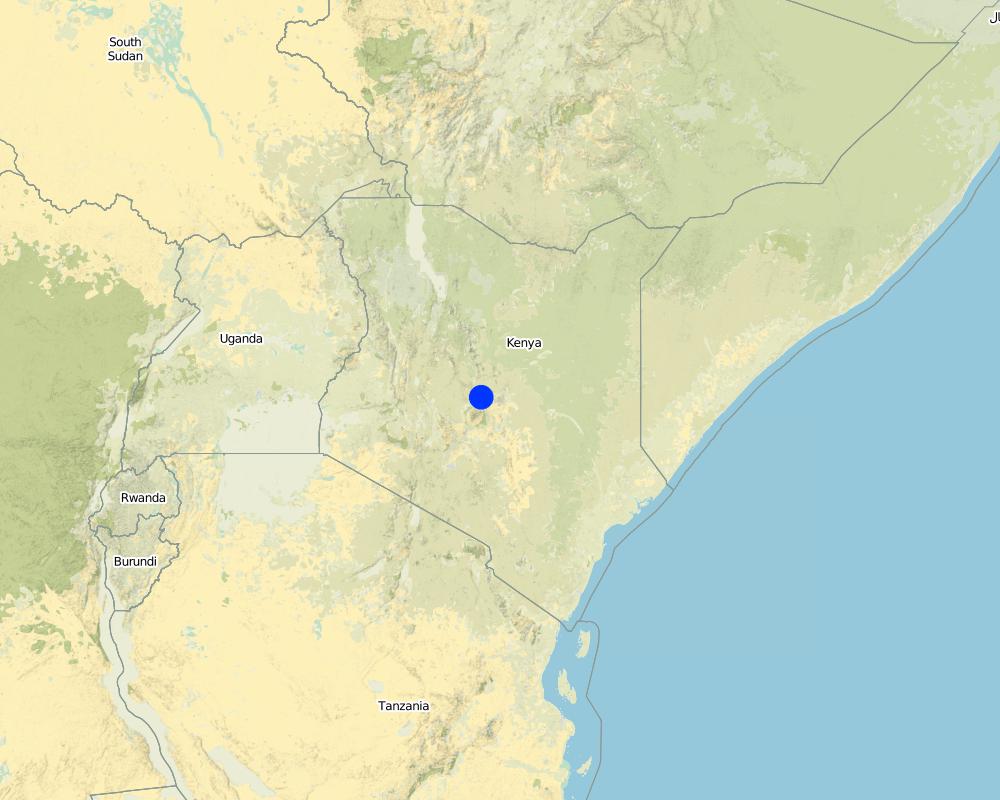Northern Rangelands Trust - Livestock to Markets [เคนยา]
- ผู้สร้างสรรค์:
- การอัพเดท:
- ผู้รวบรวม: Peter Tyrrell
- ผู้เรียบเรียง: –
- ผู้ตรวจสอบ: Donia Mühlematter, Rima Mekdaschi Studer, Hanspeter Liniger
approaches_3435 - เคนยา
- บทสรุปทั้งหมดในรูปแบบของ PDF
- บทสรุปทั้งหมดในรูปแบบของ PDF เพื่อพิมพ์
- บทสรุปทั้งหมดในรูปหน้าเว็บ
- บทสรุปทั้งหมด (ไม่มีการจัดเรียง)
- Northern Rangelands Trust - Livestock to Markets: 10 ตุลาคม 2018 (public)
- Northern Rangelands Trust - Livestock to Markets: 3 กันยายน 2018 (inactive)
- Northern Rangelands Trust - Livestock to Markets: 6 ตุลาคม 2018 (inactive)
- Northern Rangelands Trust - Livestock to Markets: 24 พฤษภาคม 2018 (inactive)
- Northern Rangelands Trust - Livestock to Markets: 5 มิถุนายน 2018 (inactive)
- Northern Rangelands Trust - Livestock to Markets: 27 เมษายน 2018 (inactive)
ดูส่วนย่อย
ขยายทั้งหมด ย่อทั้งหมด1. ข้อมูลทั่วไป
1.2 รายละเอียดที่ติดต่อได้ของผู้รวบรวมและองค์กรที่เกี่ยวข้องในการประเมินและการจัดเตรียมทำเอกสารของแนวทาง
วิทยากรหลัก
Patrick Ekodere:
เคนยา
ชื่อของโครงการซึ่งอำนวยความสะดวกในการทำเอกสารหรือการประเมินแนวทาง (ถ้าเกี่ยวข้อง)
Book project: Guidelines to Rangeland Management in Sub-Saharan Africa (Rangeland Management)1.3 เงื่อนไขที่เกี่ยวข้องกับการใช้ข้อมูลที่ได้บันทึกไว้ผ่านทาง WOCAT
วันที่เก็บรวบรวมข้อมูล (ภาคสนาม):
13/03/2018
ผู้รวบรวมและวิทยากรหลักยอมรับเงื่อนไขเกี่ยวกับการใช้ข้อมูลที่ถูกบันทึกผ่านทาง WOCAT:
ใช่
2. คำอธิบายของแนวทาง SLM
2.1 การอธิบายแบบสั้น ๆ ของแนวทาง
Northern Rangeland Trust works across the rangelands of northern Kenya to improve market access to pastoral communities across 20,000 km2. The program improves local revenue generation, incentives to reduce herd size, and channels funding into improved rangeland management across the conservancies.
2.2 การอธิบายอย่างละเอียดของแนวทาง
การอธิบายอย่างละเอียดของแนวทาง:
The Northern Rangelands Trust (NRT) is a non profit organisation established in 2004. It works with communities to develop community conservancies, to transform peoples lives, secure peace and conserves natural resources in northern Kenya. NRT works cross 20,000 km2, with 33 conservancies.
NRT established NRT Trading to identify, incubate, and pilot, and scale sustainable business across the NRT conservancies. The help to incubate and run business that encourages conservation ethics, while improving livelihoods.
The Livestock to Market Program (LTM) was established in 2006 as a partnership between NRT, NRT affiliated conservancies, and two private conservancies - Ol Pejeta and Lewa. The program was funded by Flora and Fauna International and The Nature Conservancy. The program was designed to: to build resilient livelihoods for local pastoralists through providing a local, equitable, reliable, fair market for a large number of cattle; provide incentives to increase production viability of cattle, reduce herd size and avoid losses during droughts; build conservation momentum; directly benefit individual conservancies through sale levies.
The model works to first buy cattle from NRT affiliated conservancies, these cattle are sold on weight and grade, and tries to embrace a more market-driven approach. Once bough cattle is quarantined and vaccinated on Lewa. They are then fattened and sold on to different markets depending on size and age.
The program aims to benefit local people through providing an equitable market with similar or better rates than available and through revenue generation for each conservancy - to provide health and education benefit. A key goal of this benefit system is through channeling conservancy levies and behavioral change into improved rangeland management. Improved management, implemented by conservancies, will lead to improved productivity of the rangelands, increased livestock quality, increased revenue for pastoralists, and ultimately contribute to the goals of NRT - Peace and security; resilient livelihoods; productive rangelands; stable wildlife; and growing enterprise.
NRT has a fully fledged grazing management team working across the conservancies to enhance pasture and land management is upheld by all members, this working by involving alienation of dry season and wet season grazing corridors in order to guarantee animal –wildlife sustainable grazing. Several technologies are implemented under this approach to improve rangeland management. Strategic destocking and cattle bunching in conservancies is one method. Supplementary feed is also provided to increase the weight gain of cattle before sale.
2.3 รูปภาพของแนวทาง
2.5 ประเทศ ภูมิภาค หรือสถานที่ตั้งที่ได้นำแนวทางไปใช้
ประเทศ:
เคนยา
ภูมิภาค/รัฐ/จังหวัด: :
Baringo, Garissa, Isiolo, Laiikipia, Meru, Samburu, Turkana and Lamu Counties
Map
×2.6 วันที่เริ่มต้นและสิ้นสุดของแนวทาง
ระบุปีที่เริ่ม:
2006
ความคิดเห็น:
In 2014 NRT spun off its commercial activities into a stand alone social enterprise, Northern Rangelands Trading Ltd (NRT Trading).
2.7 ประเภทของแนวทาง
- ใช้โครงงานหรือแผนงานเป็นฐาน
2.8 เป้าหมายหรือวัตถุประสงค์หลักของแนวทาง
Assist pastoralists and families in the NRT Conservancies to build resilient livelihoods by providing a local, equitable, reliable, fair market for large numbers of cattle.
Provide incentives to pastoralists to manage cattle for ready markets and over time reduce herd sizes to avoid loses due to drought among other factors, in an effort to improve rangeland health and productivity.
Gain conservation leverage by linking market access to conservation outcomes.
Directly benefit Conservancies through purchase and sale levies.
Involve a complete value chain model i.e. involving pastoralist producers, disease control actors & quarantine, designated fattening ranches, slaughter, and marketing.
2.9 เงื่อนไขที่เอื้ออำนวยหรือเป็นอุปสรรคต่อการนำเทคโนโลยีภายใต้แนวทางนี้ไปปฏิบัติใช้
บรรทัดฐานและค่านิยมทางสังคม วัฒนธรรม ศาสนา
- เป็นอุปสรรค
Pastoral societies do not necessarily have cattle for revenue generation, and they currently do not manage cattle for weight and the beef market.
การมีไว้ให้หรือการเข้าถึงแหล่งการเงินและบริการ
- เอื้ออำนวย
The spread of Mpesa (Mobile Money) is helping to improve the ability for people to share money across the region.
- เป็นอุปสรรค
Lack of funding to support disease control in the conservancies, especially those which may hinder the movement and sale of livestock. e.g FMD.
การจัดตั้งระดับองค์กร
- เอื้ออำนวย
การร่วมมือหรือการทำงานประสานกันของผู้ลงมือปฏิบัติ
- เป็นอุปสรรค
Certain value chain operations are hindered by the lack of cohesion between country and national government. This includes disease control and taxes.
การกำกับดูแลที่ดิน (การตัดสินใจ การนำเอาไปปฏิบัติใช้ และการบังคับใช้)
- เป็นอุปสรรค
There are challenges in implementing improved grazing management across many of the conservancies due to a lack of ability to enforce.
ความรู้เกี่ยวกับ SLM การเข้าถึงการสนับสนุนด้านเทคนิค
- เป็นอุปสรรค
High costs of technical expertise needed to upscale grazing and land management.
อื่นๆ
- เป็นอุปสรรค
The region is insecure and hinders the impact and effectiveness of the program.
3. การมีส่วนร่วมและบทบาทของผู้มีส่วนได้ส่วนเสียที่เกี่ยวข้อง
3.1 ผู้มีส่วนได้ส่วนเสียที่เกี่ยวข้องในแนวทางนี้และบทบาท
- ผู้ใช้ที่ดินระดับท้องถิ่นหรือชุมชนระดับท้องถิ่น
27 community conservancies
Land-owners and managers of cattle. They benefit from the sale of cattle through LTM and implement the grazing management plans.
- ผู้เชี่ยวชาญ SLM หรือที่ปรึกษาการเกษตร
NRT - Grazing management team
Provide technical advise to conservancies to improve grazing management.
- องค์กรพัฒนาเอกชน
Sidai
Sidai is working with community conservancies by selling drugs. LTM purchases some basic veterinary drugs from Sidai outlets.
- รัฐบาลระดับท้องถิ่น
County Government
Extension services for livestock management and disease control. Beneficiaries of county levies.
3.2 การเกี่ยวข้องของผู้ใช้ที่ดินระดับท้องถิ่นหรือชุมชนระดับท้องถิ่นในช่วงต่างๆของแนวทาง
| ความเกี่ยวข้องของผู้ใช้ที่ดินระดับท้องถิ่นหรือชุมชนระดับท้องถิ่น | ระบุผู้ที่มีส่วนเกี่ยวข้องและอธิบายกิจกรรม | |
|---|---|---|
| การริเริ่มหรือการจูงใจ | ปฏิสัมพันธ์ | NRT conservancy model creates independent units that have strong leadership and governance structures. These conservancy boards and management are involved and are the drivers at each stage. |
| การวางแผน | ปฏิสัมพันธ์ | Conservancies are involved in planning stages. |
| การดำเนินการ | จ่ายเงินหรือสนับสนุนจากภายนอก | NRT-LTM runs the markets and livestock fattening with support from both local and private conservancies. |
| การติดตามตรวจสอบหรือการประเมินผล | ไม่ลงมือ | Monitoring is done through the NRT monitoring systems. |
3.3 แผนผังแสดงขั้นตอนการทำงาน (ถ้ามี)
3.4 การตัดสินใจเลือกใช้เทคโนโลยี SLM
ระบุผู้ที่ทำการตัดสินใจเลือกเทคโนโลยีมากกว่าหนึ่งวิธีไปปฏิบัติใช้:
- ผู้ลงมือปฏิบัติที่เกี่ยวข้องทั้งหมดในฐานะที่เป็นส่วนรวมของแนวทาง
การอธิบาย:
The NRT grazing management teams work with the community conservancies officials and board to establish grazing management plans and implement restoration of degraded rangelands.
ระบุว่าการตัดสินใจตั้งอยู่บนพื้นฐานของ:
- การประเมินความรู้ SLM ที่ได้ทำการบันทึกไว้เป็นอย่างดี (การใช้ข้อมูลในการตัดสินใจ)
- ประสบการณ์และความคิดเห็นส่วนตัว (ไม่ได้ลงบันทึกไว้)
4. การสนับสนุนด้านเทคนิค การสร้างขีดความสามารถ และการจัดการด้านความรู้
4.1 การสร้างขีดความสามารถ / การอบรม
ได้มีการจัดอบรมให้แก่ผู้ใช้ที่ดินหรือผู้มีส่วนได้ส่วนเสียคนอื่น ๆ หรือไม่:
ใช่
ให้ระบุว่าใครเป็นผู้ได้รับการอบรม:
- ผู้ใช้ที่ดิน
ถ้าเกี่ยวข้อง ให้ระบุ เพศ อายุ สถานภาพ ชาติพันธุ์ เป็นต้น:
NRT governance department conducts effective leadership and management training to conservancy leadership across the board.
รูปแบบการอบรม:
- จัดการประชุมสู่สาธารณชน
4.2 การบริการให้คำแนะนำ
ผู้ใช้ที่ดินมีการเข้าถึงการรับบริการให้คำปรึกษาหรือไม่:
ใช่
ระบุว่ามีบริการให้คำปรึกษาหรือไม่:
- ไปเยี่ยมชมสถานที่
การอธิบาย/แสดงความคิดเห็น:
Some support is provided by county government extensions services. NRT also provides support.
4.3 การเสริมความแข็งแกร่งให้กับสถาบัน (การพัฒนาองค์กร)
สถาบันได้รับการจัดตั้งขึ้นมาหรือเสริมความแข็งแกร่งโดยแนวทางนี้หรือไม่:
- ใช่ อย่างมาก
ระบุระดับของสถาบันที่ได้รับการเสริมความแข็งแกร่งหรือจัดตั้งขึ้นมา:
- ท้องถิ่น
อธิบายถึงสถาบัน บทบาทและความรับผิดชอบ สมาชิก เป็นต้น:
Community conservancies have gained funding to implement projects and strengthened their knowledge on livestock production systems and rangeland management.
ระบุประเภทของการให้ความช่วยเหลือสนับสนุน:
- ด้านการเงิน
- การสร้างขีดความสามารถ / การอบรม
4.4 การติดตามตรวจสอบและประเมินผล
การติดตามตรวจสอบและประเมินผลเป็นส่วนหนึ่งของแนวทางหรือไม่:
ใช่
ความคิดเห็น:
Monitoring and evaluation are annually conducted through the mandatory annual statutory audit by contracted reputable audit firms.
Internal production monitoring is done through the monthly internal tracking systems.
ถ้าตอบว่าใช่ แสดงว่าการจัดเตรียมเอกสารนี้มุ่งหวังที่จะเอาไปใช้สำหรับการติดตามตรวจสอบและประเมินผลใช่หรือไม่:
ไม่ใช่
4.5 การวิจัย
การวิจัยเป็นส่วนหนึ่งของแนวทางหรือไม่:
ใช่
ระบุหัวข้อเรื่อง:
- เศรษฐศาสตร์หรือการตลาด
ให้ข้อมูลเพิ่มเติมและให้ระบุผู้ทำการวิจัย:
The research formed the basis of choosing to scale up the programme and recommendations to run the programme as a business.
5. การสนับสนุนด้านการเงินและวัสดุอุปกรณ์
5.1 ระบุงบประมาณประจำปีสำหรับแนวทาง SLM นี้
แสดงความคิดเห็น (แหล่งของการระดมทุน ผู้บริจาคคนสำคัญ):
The program is supported by a loan from The Nature Conservancy, that is repayable in 10 years.
5.2 การสนับสนุนด้านการเงิน / วัสดุอุปกรณ์ให้แก่ผู้ใช้ที่ดิน
ผู้ใช้ที่ดินได้รับการสนับสนุนด้านการเงิน / วัสดุอุปกรณ์ไปปฏิบัติใช้เทคโนโลยีหรือไม่:
ใช่
ถ้าใช่ ให้ระบุประเภทของการสนับสนุน เงื่อนไขและผู้จัดหามาให้:
Financial support comes in the form of improved livestock markets.
5.3 เงินสนับสนุนสำหรับปัจจัยนำเข้า (รวมถึงแรงงาน)
- ไม่มี
5.4 เครดิต
มีการจัดหาเครดิตมาให้ภายใต้แนวทาง SLM หรือไม่:
ไม่ใช่
5.5 แรงจูงใจหรือเครื่องมืออื่น ๆ
แรงจูงใจหรือเครื่องมืออื่น ๆ ได้ถูกนำไปใช้ส่งเสริมการใช้เทคโนโลยี SLM หรือไม่:
ไม่ใช่
6. การวิเคราะห์ผลกระทบและการสรุป
6.1 ผลกระทบของแนวทาง
ทำให้ผู้ใช้ที่ดินระดับท้องถิ่นมีอำนาจขึ้น ปรับปรุงการเข้าร่วมของผู้มีส่วนได้ส่วนเสียให้ดีขึ้นหรือไม่:
- ไม่ใช่
- ใช่ เล็กน้อย
- ใช่ ปานกลาง
- ใช่ อย่างมาก
Through the strengthening of community conservation.
ช่วยให้ผู้ใช้ที่ดินนำเอาเทคโนโลยี SLMไปใช้และบำรุงรักษาสภาพไว้ได้หรือไม่:
- ไม่ใช่
- ใช่ เล็กน้อย
- ใช่ ปานกลาง
- ใช่ อย่างมาก
Provide financial incentives and technical support from NRT.
ระดมกำลังหรือปรับปรุงการเข้าถึงแหล่ง เงินทุนสำหรับการดำเนินการ SLM หรือไม่:
- ไม่ใช่
- ใช่ เล็กน้อย
- ใช่ ปานกลาง
- ใช่ อย่างมาก
Through financing of conservancy operation which supports governance, security and conservation programs ($80,000 over 4 years).
ปรับปรุงความรู้และความสามารถของผู้ใช้ที่ดินในการดำเนินการ SLM หรือไม่:
- ไม่ใช่
- ใช่ เล็กน้อย
- ใช่ ปานกลาง
- ใช่ อย่างมาก
Yes through the outreach from NRT grazing management team.
ทำให้ผู้ใช้ที่ดินระดับท้องถิ่นมีอำนาจขึ้น ปรับปรุงการเข้าร่วมของผู้มีส่วนได้ส่วนเสียให้ดีขึ้นหรือไม่:
- ไม่ใช่
- ใช่ เล็กน้อย
- ใช่ ปานกลาง
- ใช่ อย่างมาก
Strengthen ties between community conservancies, NRT and private conservancies.
ทำให้กลุ่มด้อยโอกาสมีอำนาจทางสังคมและเศรษฐกิจหรือไม่:
- ไม่ใช่
- ใช่ เล็กน้อย
- ใช่ ปานกลาง
- ใช่ อย่างมาก
Empower marginalized pastoralists through the provision of $1,982,210 over 4 years in income to 14,864 families.
นำไปสู่ความมั่นคงด้านอาหารหรือปรับปรุงโภชนาการให้ดีขึ้น:
- ไม่ใช่
- ใช่ เล็กน้อย
- ใช่ ปานกลาง
- ใช่ อย่างมาก
Through financial provision to pastoral people.
ปรับปรุงการเข้าถึงตลาดหรือไม่:
- ไม่ใช่
- ใช่ เล็กน้อย
- ใช่ ปานกลาง
- ใช่ อย่างมาก
This created regional livestock markets with 5630 cattle bought over 4 years.
6.2 แรงจูงใจหลักของผู้ใช้ที่ดินเพื่อที่จะนำ SLM ไปปฏิบัติใช้
- การผลิตที่เพิ่มขึ้น
There is an increasing shift towards a production focused livestock industry in pastoral areas.
- กำไร (ความสามารถ) อัตราส่วนค่าใช้จ่ายต่อผลประโยชน์ที่เพิ่มขึ้น
This system provides an opportunity for community members to benefit from reliable prices at markets.
- การเสื่อมของที่ดินลดลง
This project works with community conservancies to prevent and reduce land degradation, which has become a widespread problem in the north of Kenya. This is done through the implementation of new grazing systems, strengthening resource governance, and restoring degraded areas through reseeding and bush clearing.
6.3 ความยั่งยืนของกิจกรรมของแนวทาง
ผู้ใช้ที่ดินสามารถทำให้สิ่งต่างๆ ที่ได้ปฏิบัติใช้โดยแนวทางนี้ยั่งยืนได้หรือไม่ (โดยไม่มีการสนับสนุนจากภายนอก):
- ไม่
ถ้าตอบว่าไม่หรือไม่แน่ใจ ให้ระบุและแสดงความคิดเห็น :
NRT - Trading is a central actor in the LTM system, and controls the purchasing and movement of cattle, and manages the finances of the sales. The landowners do not purchase, fatten or sell livestock, they rely on NRT.
6.4 จุดแข็งและข้อได้เปรียบของแนวทาง
| จุดแข็ง / ข้อได้เปรียบของแนวทางในทัศนคติของผู้ใช้ที่ดิน |
|---|
| Access to a reliable, close, and equitable weight and grade based market for cattle. |
| Opportunities to restore and prevent landscape degradation through funding provided to communities, support from NRT, and through the shift towards higher quality beef, which requires improved rangeland management to meet demands. |
| Funding for community projects through conservancies. |
| จุดแข็ง / ข้อได้เปรียบของแนวทางในทัศนคติของผู้รวบรวมหรือวิทยากรหลัก |
|---|
| Strengthening institutions of grazing management, which should improve the ability to implement sustainable rangeland management technologies. |
| Creating a shift to a production based focus on livestock management, which should increase livestock quality, and the underlying rangeland productivity. |
6.5 จุดอ่อน / ข้อเสียเปรียบของแนวทางและวิธีในการแก้ไข
| จุดอ่อน / ข้อเสียเปรียบในทัศนคติของผู้ใช้ที่ดิน | สามารถแก้ไขปัญหาได้อย่างไร |
|---|---|
| Unfair or inequitable pricing of livestock. | Clarity on revenue sharing from NRT - Trading. Prices per weight and grade clear and fair. |
| Some pastoralists do not want to sell cattle, and are not motivated by increasing revenue through market-based systems. |
| จุดอ่อน / ข้อเสียเปรียบในทัศนคติของผู้รวบรวมหรือวิทยากรหลัก | สามารถแก้ไขปัญหาได้อย่างไร |
|---|---|
| Lack of ownership and participation in the NRT LTM may isolate community members and create friction over finances and project ownership. | |
| Land and resources on the fattening ranches are limited and land invasions have complicated this. |
7. การอ้างอิงและการเชื่อมต่อ
7.1 วิธีการหรือแหล่งข้อมูล
- การเก็บรวบรวมมาจากรายงานและเอกสารที่มีอยู่
Websites, power-point presentations, and conversations with NRT staff.
7.3 เชื่อมโยงกับข้อมูลที่มีอยู่บนออนไลน์
ชื่อเรื่องหรือคำอธิบาย:
NRT - LTM Website
URL:
http://www.nrt-kenya.org/livestock/
ลิงก์และโมดูล
ขยายทั้งหมด ย่อทั้งหมดลิงก์
ไม่มีลิงก์
โมดูล
ไม่มีโมดูล


